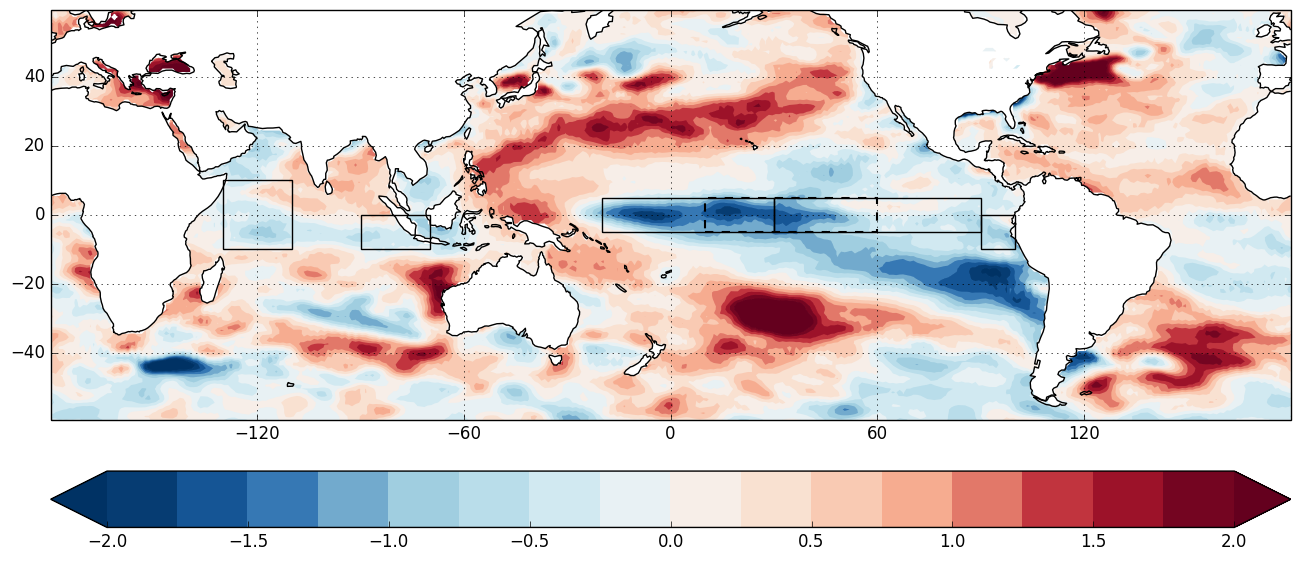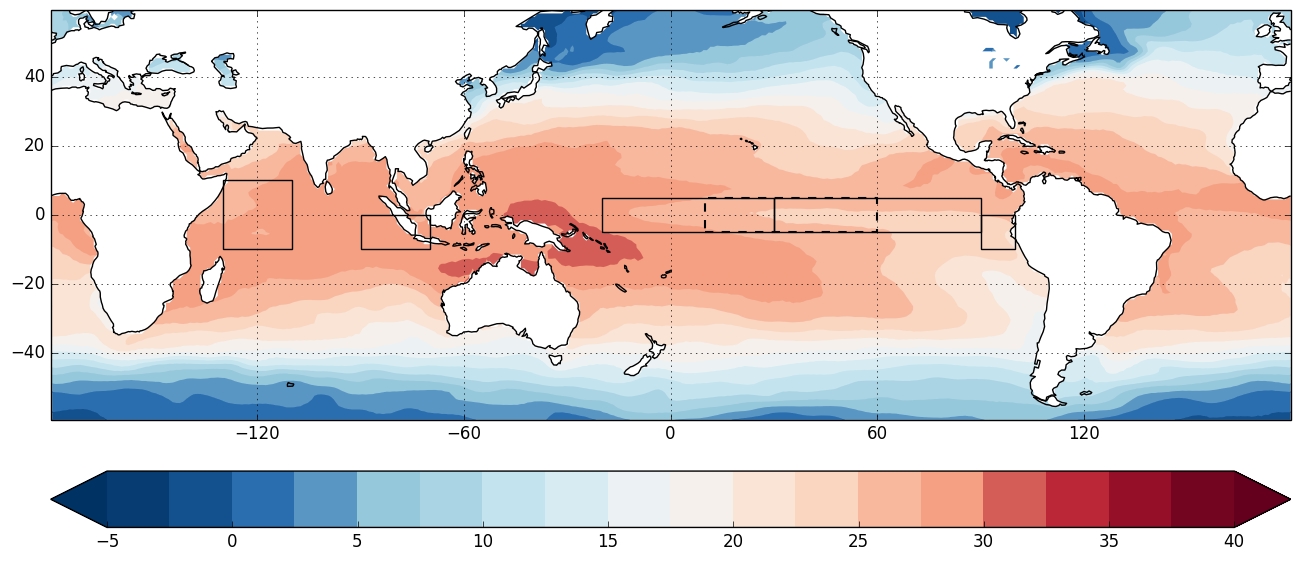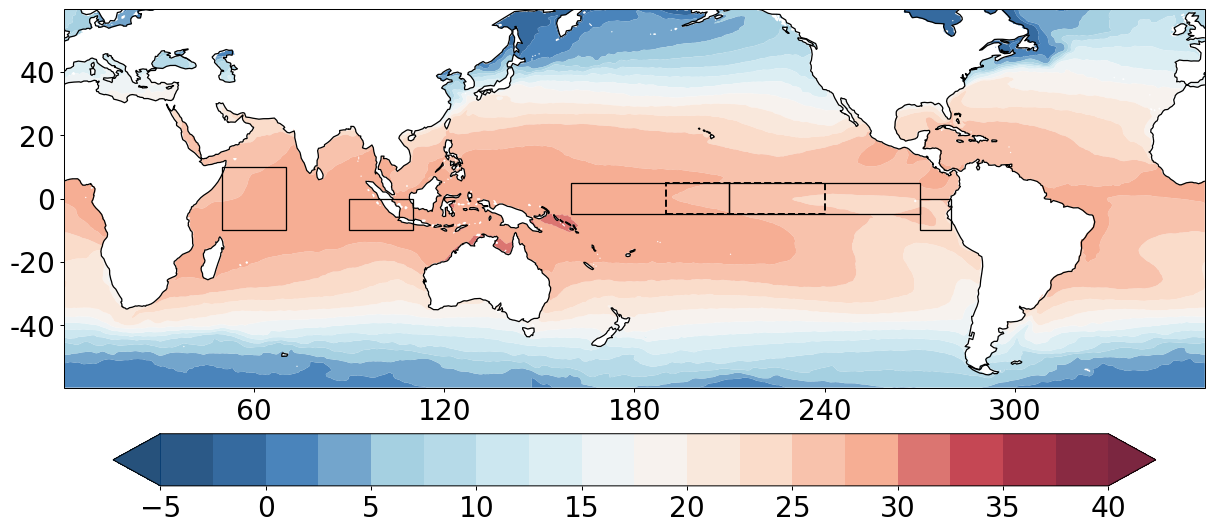January 2021 Sea Surface Temperature Assessment
A. Niño Regions
Niño SST Indices are based on the average of SST anomalies across the given regions: Niño 1+2 (0-10S, 90W-80W), Niño 3 (5N-5S, 150W-90W), Niño 3.4 (5N-5S, 170W-120W) and Niño 4 (5N-5S, 160E-150W). These indices are used to monitor the conditions in the Tropical Pacific for the occurrence of El Niño or La Niña events.
For the month of January, negative sea surface temperature anomalies (SSTAs) of ~ -1.0 to -2.0°C were still evident in the central equatorial Pacific (Nino 4 and Nino 3.4), while in the eastern equatorial Pacific (from 60 degrees East), near average SSTAs were observed . However, most of the western Pacific near the Maritime continent, SSTAs were near to warmer than average with 1.0°C to 2.0 °C anomaly, located east of the Philippines while in the southwestern part, negative SSTAs were observed.
B. Indian Ocean Dipole (IOD)
The Indian Ocean Dipole mode Index (DMI) is defined as the difference between the SST anomalies (ºC) of Western (10ºS-10ºN & 50ºE-70ºE) and Eastern (10ºS-0ºN & 90ºE-110ºE) Equatorial Indian Ocean regions (WEST-EAST). The DMI values represent the intensity of the Indian Ocean Dipole (IOD); DMI values above +0.4 °C is referred as the positive IOD, DMI values below −0.4 °C is referred as the negative IOD and DMI values between +0.4 °C and -0.4 °C is referred as the neutral IOD.
IOD value for January was within neutral level as SSTAs across the equatorial Indian Ocean were observed to be near to slightly cooler than average.


